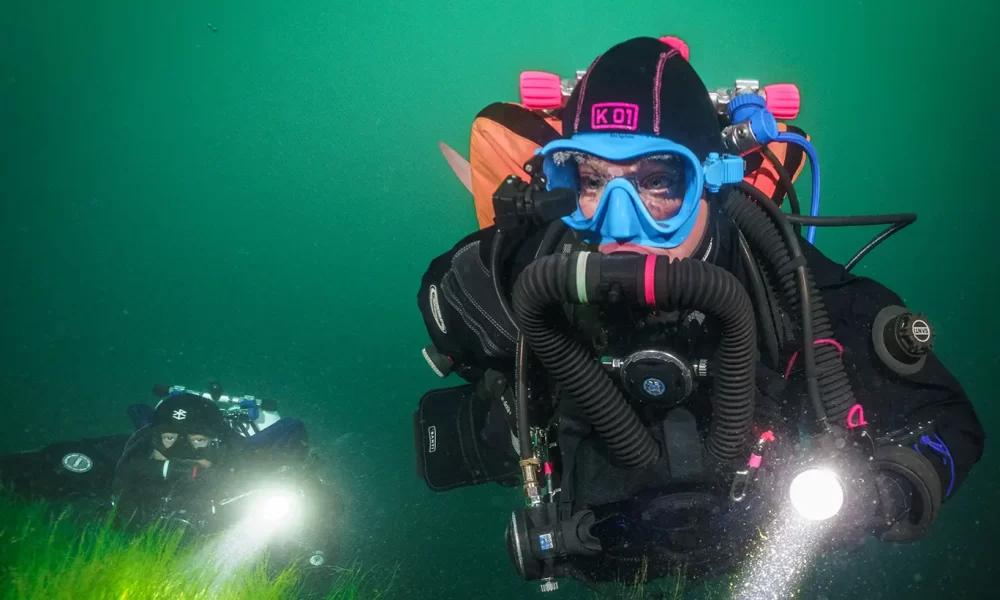I'm not sure what a CO2 hit does to impact using the BOV. When you switch the BOV to OC, it closes off and seals the loop so any CO2 in there is out of the picture. The mushroom valves could have flown the coop entirely and the BOV in OC mode is going to work just fine.
That said, my Hollis BOV on my KISS has a piece of crap unbalanced 2nd stage. It's perfectly fine to quickly get off the loop. If I had to stay off the loop for an extended period, I would switch to my S600 strapped to the offboard dil/bailout.
Looking at the
patent (assuming it's the one implemented in Symbios), the unit can be divided into two parts - an "outer loop" consisting of the DSV, inhale hose, exhale hose and the gas block. And an "inner loop" with CLs and Scrubber (incl. sensor head). The gas block contains a OPV, combined ADV/BOV and valves in the gas block that can isolate the outer loop from the inner loop.
In OC mode the inner and outer loop are isolated from each other, which means gas can only come from the BOV/ADV, pass through the DSV, and exit via the OPV in the gas block. Btw, when you switch to OC, the spring pressure on the OPV exit valve is removed and it will work like any 2nd stage regulator exit valve.
In other word, regardless if the one-way valves are defect (or even missing) and provided the outer loop is not leaking, inhalation gas can only come from the BOV demand valve. While exhale gas can only exit via the OPV exit valve. Since the inner loop is blocked the volume is constant. The only re-inhaled gas will be in the DSV - more or less the same volume as any 2nd stage regulator.
To me it looks very ingenious, and implemented right it should breath very well in OC, with a slight extra effort to exhale (you will have to push gas down to the gas block to exit).
But there is one thing that bugs me. Both the valves isolating the inner and outer loops close outside-in. This means that negative ambient pressure (-0.1 bar to -1 bar) in the inner loop will force the valves open. In other words, if you descend in OC mode (BOV closed, DSV open) they will act as internal OPV between outer and inner loop and equalize pressure between the loops. All well and fine.
However, if you ascend with BOV closed (DSV open or closed does not matter) the pressure in the inner loop will increase with no way to exit. Since the valves between inner and outer loops will seal shut if the pressure in the inner loop is higher that the outer loop, this means it might be impossible to return to CC and vent any over-pressure. Eventually the inner loop will rupture.
Solution could be a separate OPV in the inner loop. A better solution would be if the exhale valve could close from the inside-out (instead of outside-in). The exhale valve could then act as OPV if the inner loop pressure is significantly higher than ambient pressure, while the inhale valve would act as OPV if the inner loop is significantly lower than ambient pressure. The latter solution would not require any additional components.





